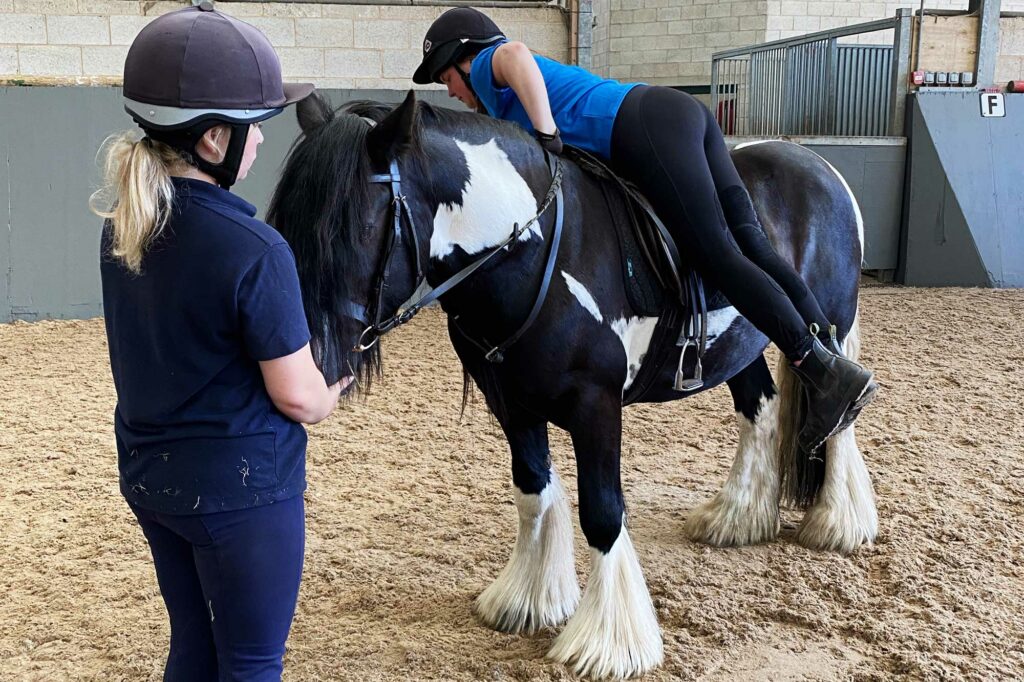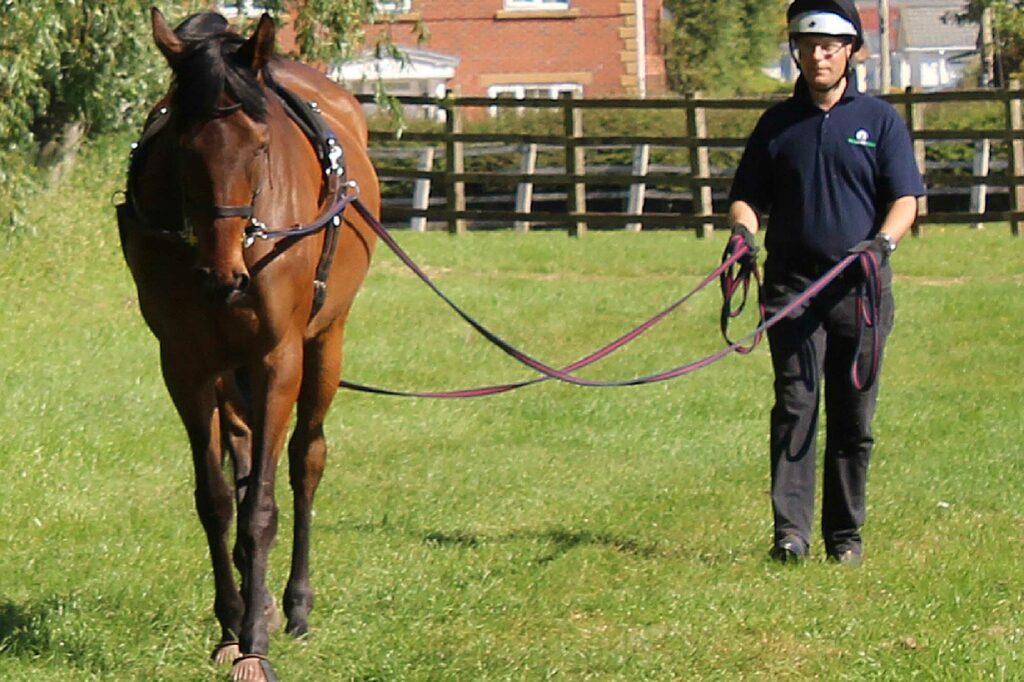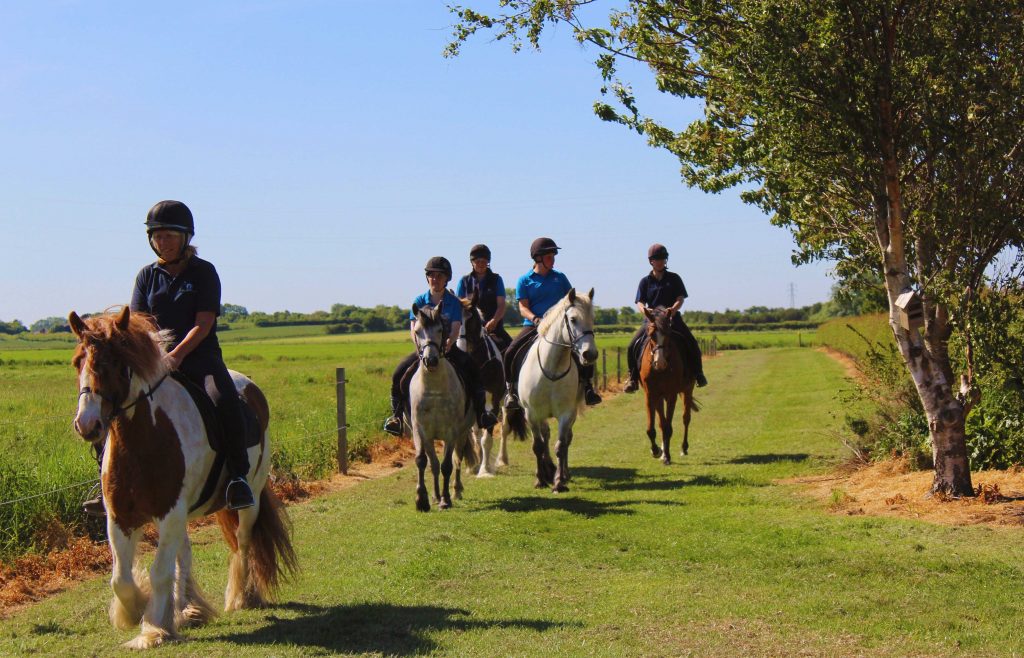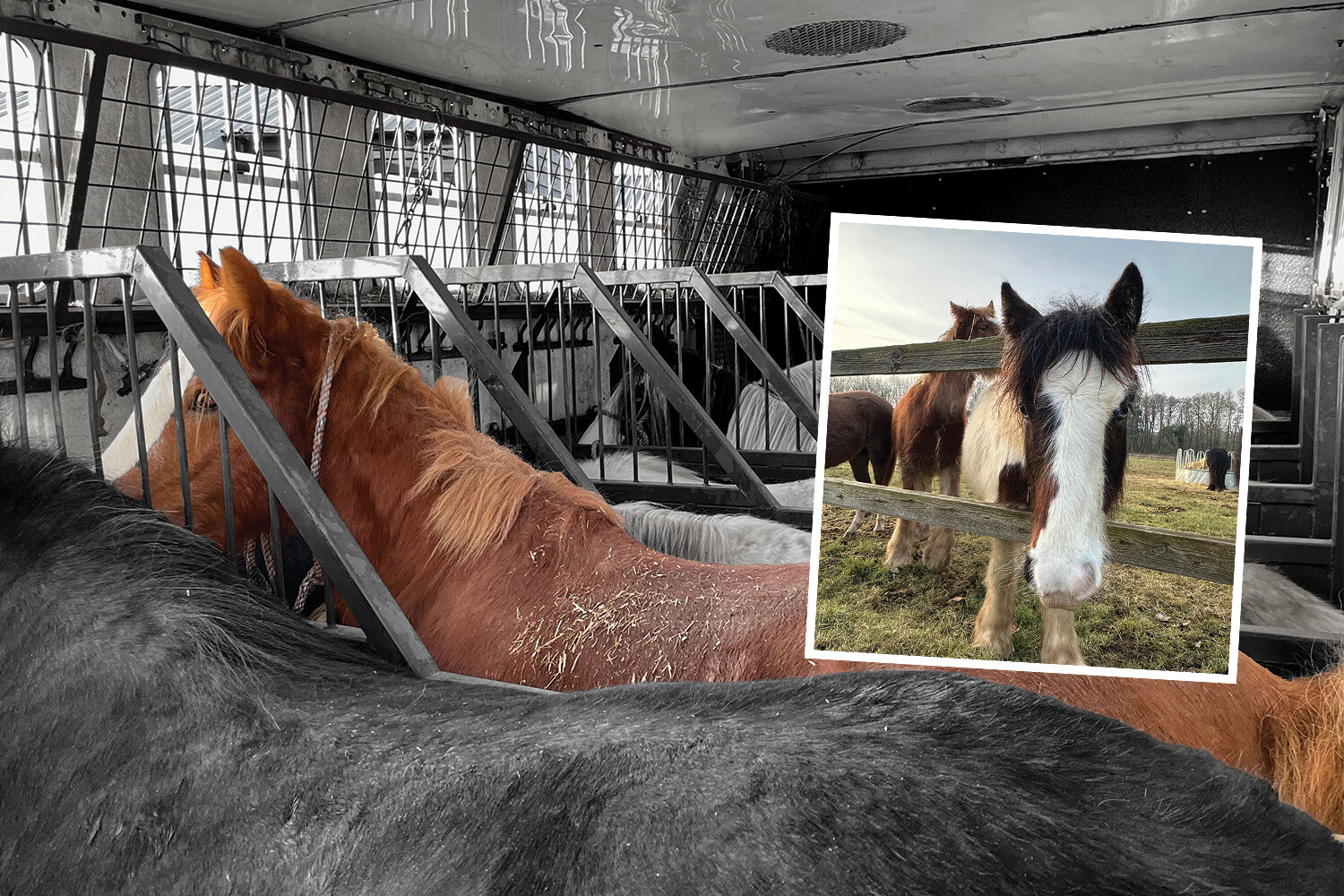Bringing horses back into work: how to restart youngsters, progress a horse’s rehab or get an all-rounder fit
Want to find out more about bringing horses back into work? Check out expert advice from Adam Cummins, Centre Manager at Penny Farm Rescue and Rehoming Centre.
Posted on 25/06/2020

With such a wide variety of horses and ponies coming into work at World Horse Welfare’s Rescue and Rehoming Centres, we’re really aware of the importance of making sure you tailor a plan for each one. In this blog, we’re going to look at three types of horses who might be coming back into work: young horses who’ve had a break, horses starting ridden work again after undergoing a rehab programme, and established all-rounders who’ve had a spell off work (not due to injury).
Bringing young horses back into work
One of the most important things to remember when bringing any horse back into work is to give them a full health check first – this should include checking their feet, teeth and tack. Checking teeth and tack is particularly important with youngsters as they can grow and change shape so quickly, even if you don’t notice it when you see them every day. The last thing you want is for a young horse to associate work with pain and discomfort, so make sure everything fits properly and that the whole experience is as positive as possible.
It’s always good to have a plan but do remember that all horses are different – what worked for your friend’s horse might not work for your youngster. You know your horse best, so make sure your plan for them to come back into work suits their needs and stage of development. That said, always be prepared to adapt your plan and listen to your horse! Some horses need a little extra time at one particular stage or, in the case of youngsters, they might not pick something up again as quickly as you expected.
When bringing a young horse back into work after a break, it’s really important to revisit every single step of the process as you completed it first time. With ours here at Penny Farm, we go right back to lunging and long-reining, then progress through to lying a rider over before getting back on board again. Whilst this might sound time-consuming, it doesn’t take nearly so long as starting from scratch and ensures that your youngster is happy and confident throughout – which is so important with young horses.

Another key part of planning a programme to bring your youngster back into work is making sure you include plenty of variety – with youngsters especially it’s essential to keep them mentally stimulated and happy in their work. Combined with checking their feet, teeth and tack before starting your programme, keeping their work interesting and varied means you don’t give them any reason not to want to do a job. Turnout time is really important as part of their routine too – even if it’s into a sand pen rather than out into a paddock. We all need downtime and horses are no different!
With our young horses, we tend to work them three or four times a week – this is plenty often enough for youngsters and helps to keep them interested. We make sure they have a mixture of hacking and time in the school – especially in the early stages sometimes just walking is enough for them. Some youngsters need to follow another horse for a while to give them confidence, especially out hacking, so don’t be afraid to do this if yours needs a bit of a confidence boost.
Bringing a horse back into work after rehabilitation
When bringing a horse back into work after rehab from an injury, even before you carry out their health check (again, including feet, teeth and tack) it’s vital to make sure they are completely ready to start work again. Have they fully recovered from their injury? Are they strong enough? Are you going to be dealing with any behavioural issues as a result of remembered pain? If in any doubt about any of these things, do enlist expert help – it’s much better to start off on the right foot than be trying to resolve problems further down the line. If you’re worried about what other people on your yard might think, don’t be – remember, it’s your horse and you want to do your best by them so it doesn’t matter how someone else says they would do it!
Bringing a horse back into work as part of a rehabilitation programme is different than bringing a youngster back into work after a break because often these horses have had a job before and are aiming to return to it. If that is the case and you have a goal in mind, make sure you factor that into your plan – again always being prepared to adapt as you go if your horse needs you to.
Long-reining isn’t just for youngsters – it can be so useful for horses undergoing rehab as it allows them to gain in strength and confidence again without dealing with the weight of a rider too. Not only that, it means you can get a really good look at how your horse is working, which can be helpful in noticing any asymmetries and adjusting their programme accordingly. Long-reining can be as physically demanding as you need it to be – you can do all sorts of work in the school as well as taking your horse out and about (as long as you’re sure your horse’s steering and brakes are in excellent working order!). Again, please don’t be afraid to enlist expert help if you need it – it could make all the difference to successfully getting your horse back to full strength and fitness.

In-hand work can also be hugely useful for horses on a rehab programme – a chartered physiotherapist will be able to advise on exactly what exercises your horse will benefit from most. Again, working them from the ground lets you see exactly what your horse is doing – and spot how they might be taking the easy way out too! Just like us, horses can be noticeably one-sided and will invariably do things in the easiest way possible – which might not be how they actually need to do an exercise to benefit from it.
When you reach the stage of starting ridden work again, make sure you give your horse as much time at each stage as they need and incorporate plenty of variety too. Gentle hacking can be a great way to help build your horse’s strength under saddle again and helps keep them on board mentally too. Depending on what your horse needs, you may find they really benefit from continuing with some in-hand exercises and/or long-reining interspersed with ridden work – a physio will be able to advise on exactly what will work best for your horse at each stage.
Bringing an established all-rounder back into work
If your horse falls into this category, remember to carry out a health check (again, covering feet, teeth and tack) before starting work. With an established horse you can complete a basic fittening plan appropriate to your end goal (although don’t be afraid to adapt this as your horse needs).
Make sure your horse’s routine and diet are suitable – most horses do very well on a fibre-based diet regardless of their level of work, so don’t feel they need hard feed just because they’re being ridden. Turnout time is really important and ideally they should have access to grass or hay 24/7 when not being worked.
If your horse is overweight, don’t be tempted to give them hard feed in hope of giving them a bit more oomph – losing weight will likely do much more for their energy levels than unnecessary extra calories. For advice on ways to provide ongoing access to forage when your horse’s calorie intake needs to be restricted for weight management reasons do give our team a call on +441953 497238 and they’ll be very happy to help.
A basic fitness plan should take around six to eight weeks to complete, starting off with hacking in walk only for two weeks. At around three to four weeks in you can start to introduce short periods of slow trot work, gradually increasing these depending on how your horse responds. We would start introducing work in the school at around week four or five – although this isn’t schooling as such at this stage. Around week five or six you can begin to introduce steady canter work, again gradually increasing this.

Do remember that all horses are different and this process could take much longer than six to eight weeks, depending on how much time your horse has had off, the stage they were at before their break and whether they need to lose some excess weight as well as gain fitness. The most important thing is your horse returns to work relaxed, healthy and sound.
Key points to remember when bringing your horse back into work
To summarise, regardless of which category your particular horse comes under, the key points are:
Pre-work health check – make sure you get your horse’s feet, teeth and tack checked before starting any work with them again.
Come up with a loosely structured plan for getting your horse back into work, but don’t be afraid to adapt it as and when necessary – all horses are different.
Try to maintain a variety of work – this is important for all horses, regardless of their age, stage of education and fitness level. You want your horse to enjoy their work, so mental stimulation is just as important as the physical fitness aspect of their programme.
Feed appropriately – most leisure horses will do very well on a fibre-based diet alone and fibre should in any case make up the vast majority of any horse’s diet, regardless of their level of performance. Don’t make life more difficult for yourself by supplying your horse with unnecessary extra calories that turn into excess energy – it doesn’t do much for their powers of concentration!
Remember, there are no short cuts when bringing a horse back into work.
If in doubt, call in expert help – it’s much better to get things going the right way from the start rather than trying to put problems right further down the line.
You can find more more expert advice on our Welfare Wednesdays page, including Adam’s presentation in full in our “Maintaining your horse’s fitness in summer 2020” webinar featuring world class eventer Pippa Funnell as well as a webinar on groundwork featuring Chartered Physiotherapist Jo Paul and Belwade Farm Rescue and Rehoming Centre Manager Eileen Gillen.
Topics
Related Blog Posts

Plan for an emergency when you’re not around – help us to help your horse
Deputy Chief Field Officer Jon Phipps has top tips for owners on making plans just in case your horse injures themselves when you’re not there.

How to help a needle-shy horse overcome their fear
Grooms Amy and Emily explain how they work with horses who are nervous with needles before a visit from the vet.
Recommended News Articles

Our Somerton centre has reopened to visitors following devastating floods earlier this month
World Horse Welfare extend thanks to everyone who offered to help

Horses rescued from being cruelly smuggled abroad are progressing well
The Dover 26 - where are they now?

Equine charities host New York Climate Week event
For the first time, The Donkey Sanctuary and World Horse Welfare have taken part in the annual Climate Week NYC.
Enjoy reading stories like this?
Join over 55,000 other horse lovers and sign up for our email newsletter

Join over 55,000 other horse lovers and sign up for our email newsletter
Sign me up now